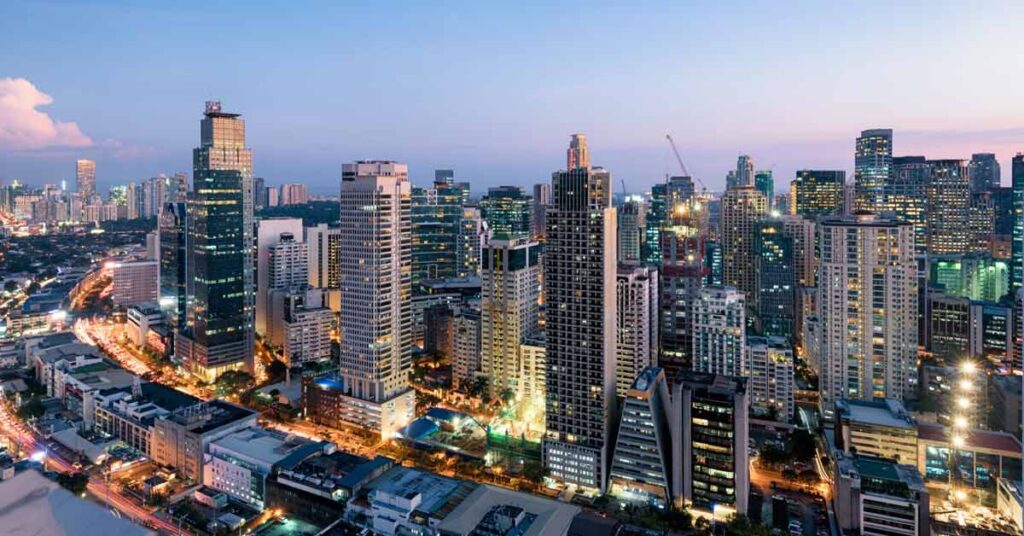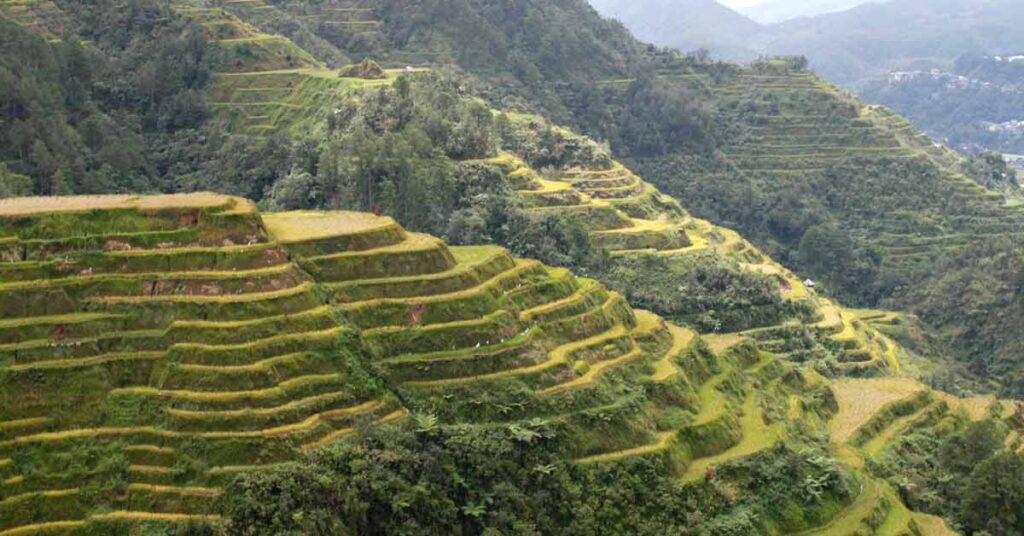
Travelling to the Philippines can be a life-changing experience, with its rich history, diverse culture, and picturesque landscapes. However, before diving into this archipelago’s wonders, you must secure a visa, specifically the Philippines Evisa. In this article, we’ll streamline the process and provide a comprehensive guide on applying for Philippines Evisa, along with essential information on requirements, process time, cost, and common mistakes to avoid. By the end of this guide, you’ll be equipped with the knowledge to make your visa application process as smooth and hassle-free as possible.
Check if your country supports Philippines Evisa or Visa or Visa on Arrival
| Afghanistan | visa required |
| Albania | visa required |
| Algeria | visa required |
| Angola | visa on arrival |
| Antigua and Barbuda | e-visa |
| Armenia | e-visa |
| Australia | e-visa |
| Bahamas | visa required |
| Bahrain | e-visa |
| Belarus | visa required |
| Belize | visa required |
| Benin | e-visa |
| Bhutan | visa required |
| Bosnia and Herzegovina | visa required |
| Botswana | visa required |
| Burkina Faso | visa required |
| Burundi | visa required |
| Cape Verde | visa on arrival |
| Central African Republic | visa required |
| Chad | visa required |
| China | visa required |
| Comoros | visa on arrival |
| Congo | visa required |
| Croatia | visa required |
| Cuba | visa required |
| Djibouti | e-visa |
| Dominican Republic | visa required |
| DR Congo | visa required |
| Ecuador | e-visa |
| Egypt | visa required |
| El Salvador | visa required |
| Equatorial Guinea | visa required |
| Eritrea | visa required |
| Ethiopia | e-visa |
| Gabon | e-visa |
| Georgia | e-visa |
| Ghana | visa required |
| Grenada | visa required |
| Guatemala | visa required |
| Guinea | e-visa |
| Guinea-Bissau | visa on arrival |
| Guyana | visa required |
| Honduras | visa required |
| India | e-visa |
| Iran | e-visa |
| Iraq | visa required |
| Ireland | visa required |
| Jamaica | visa required |
| Jordan | visa required |
| Kenya | visa on arrival |
| Kiribati | visa required |
| Kosovo | visa required |
| Kuwait | visa required |
| Kyrgyzstan | visa on arrival |
| Lebanon | visa required |
| Lesotho | e-visa |
| Liberia | visa required |
| Libya | visa required |
| Madagascar | visa on arrival |
| Malawi | visa on arrival |
| Maldives | visa on arrival |
| Mali | visa required |
| Mauritania | visa on arrival |
| Mexico | visa required |
| Moldova | e-visa |
| Mozambique | visa required |
| Namibia | visa required |
| Nauru | visa required |
| Nepal | visa on arrival |
| Nicaragua | visa on arrival |
| Niger | visa required |
| Nigeria | visa on arrival |
| North Korea | visa required |
| North Macedonia | visa required |
| Pakistan | e-visa |
| Palau | visa on arrival |
| Palestine | visa free |
| Panama | visa required |
| Papua New Guinea | visa on arrival |
| Paraguay | visa required |
| Qatar | e-visa |
| Saint Kitts and Nevis | e-visa |
| Saint Lucia | visa on arrival |
| Samoa | visa on arrival |
| Sao Tome and Principe | e-visa |
| Saudi Arabia | visa required |
| Senegal | visa on arrival |
| Serbia | visa required |
| Sierra Leone | visa required |
| Slovakia | visa required |
| Slovenia | visa required |
| Somalia | visa on arrival |
| South Africa | visa required |
| South Sudan | e-visa |
| Sudan | visa required |
| Swaziland | visa required |
| Syria | visa required |
| Tajikistan | visa on arrival |
| Tanzania | visa on arrival |
| Togo | visa on arrival |
| Tonga | visa required |
| Trinidad and Tobago | visa on arrival |
| Tunisia | visa required |
| Turkey | visa required |
| Tuvalu | visa on arrival |
| Uganda | visa on arrival |
| Ukraine | visa required |
| United Arab Emirates | e-visa |
| United Kingdom | visa required |
| Uzbekistan | e-visa |
| Venezuela | visa required |
| Yemen | visa required |
| Zambia | e-visa |
| Zimbabwe | e-visa |
Understanding the requirements for Philippines Evisa
Before you start your application, it’s crucial to understand the requirements for obtaining a Philippines Evisa. These requirements may differ depending on your nationality and the purpose of your visit. Generally, the following documents are needed for your application:
- A valid passport with at least six months of validity from entry into the Philippines.
- A completed eVisa application form can be accessed through the official Philippines Evisa portal.
- A recent passport-sized photograph with a white background and without eyeglasses or headgear.
- A valid return or onward flight ticket.
- Proof of sufficient funds for the duration of your stay in the Philippines.
- A copy of your hotel booking or a letter of invitation from your host in the Philippines.
- Payment of the eVisa processing fee.
It’s essential to double-check the specific requirements for your nationality and purpose of visit, as additional documentation may be necessary in some cases.
The processing time for the Philippines Evisa
Knowing the processing time for Philippines Evisa is crucial in planning your trip. Generally, an eVisa application’s processing time can take 3 to 5 business days. However, this can vary depending on several factors, such as the volume of applications, your nationality, or any errors in your application form.
Applying for your eVisa before your travel date is advisable to ensure the earliest possible delays. This will provide ample time to rectify any issues with your application and ensure a smooth and timely approval.
The cost of Philippines Evisa
The cost of obtaining a Philippines Evisa can vary depending on your nationality and the type of visa you’re applying for. Typically, the fee ranges from $30 to $60 for a single-entry visa, while a multiple-entry visa can cost between $60 to $90. This fee must be paid when submitting your application and is non-refundable, regardless of whether your application is approved or denied.
In addition to the eVisa processing fee, you may also be required to pay a service fee to the visa application centre or a convenience fee for online payments. It’s essential to factor in these costs when budgeting for your trip to the Philippines.
Step-by-step guide on how to apply for Philippines Evisa
Now that you’re aware of the requirements, processing time, and cost of obtaining a Philippines Evisa, let’s dive into the step-by-step guide on how to apply:
- Access the official Philippines Evisa portal: Visit the official website and create an account using your email address and a secure password.
- Fill out the application form: Log in to your account and complete the eVisa application form, ensuring all the information provided is accurate and up-to-date.
- Upload the required documents: Scan and upload the necessary supporting documents, such as your passport, photograph, and proof of accommodation.
- Pay the processing fee: Proceed to the payment section and pay the required eVisa fee using a valid credit or debit card.
- Submit your application: Review your application and submit it for processing. Remember to save a copy of your application confirmation for future reference.
- Wait for the approval: You will receive an email notification once your eVisa application has been approved or denied. If approved, you’ll receive a copy of your eVisa via email.
- Print your eVisa: Print a physical copy of your approved eVisa and keep it with you during your stay in the Philippines.
Common mistakes to avoid when applying for Philippines Evisa
To ensure a smooth and successful application process, be mindful of these common mistakes:
- Submitting an incomplete or inaccurate application form: Double-check your application for any errors or omissions, as this can cause delays or even a rejection of your application.
- Using a low-quality or incorrect photograph: Ensure your passport-sized photo meets the specified requirements, such as having a white background and being free of eyeglasses or headgear.
- Applying too close to your travel date: Apply well in advance to avoid potential delays and allow sufficient time for your eVisa to be processed.
- Not providing sufficient proof of funds or accommodation: Ensure you submit adequate documentation to demonstrate your financial stability and confirmed accommodation for your stay.
Checking the status of your Philippines Evisa application
You can check the status of your eVisa application through the official Philippines Evisa portal by logging in to your account and navigating to the “Check Application Status” section. Here, you’ll be able to view the progress of your application and receive updates on its approval or denial.
How long does a Philippines Evisa last?
The duration of a Philippines Evisa typically depends on the type of visa you’re applying for and your nationality. Most eVisas are valid for a single-entry stay of up to 30 days, while multiple-entry visas may allow up to 59 days within six months. Ensure you check the specific duration for your nationality and visa type before applying.
Extending your Philippines Evisa

If you wish to extend your stay beyond your eVisa, you may apply for a visa extension at the nearest Bureau of Immigration office in the Philippines. Remember that additional fees and documentation may be required for this process, and not all extensions are guaranteed to be approved.
Applying for a Philippines Evisa can be straightforward if you’re well-prepared and knowledgeable about the requirements, process time, and cost. By following the step-by-step guide and avoiding common mistakes, you’ll be well on your way to exploring the wonders of the Philippines. Here are some additional tips to ensure a successful application:
- Keep digital and physical copies of your eVisa and supporting documents throughout your trip.
- Regularly check your email for updates on your application status.
- Familiarize yourself with the customs and entry regulations of the Philippines.
Read: How to apply and get Poland eVisa
With this guide, you’re now equipped with the necessary knowledge to apply for Philippines Evisa. Happy travels!

